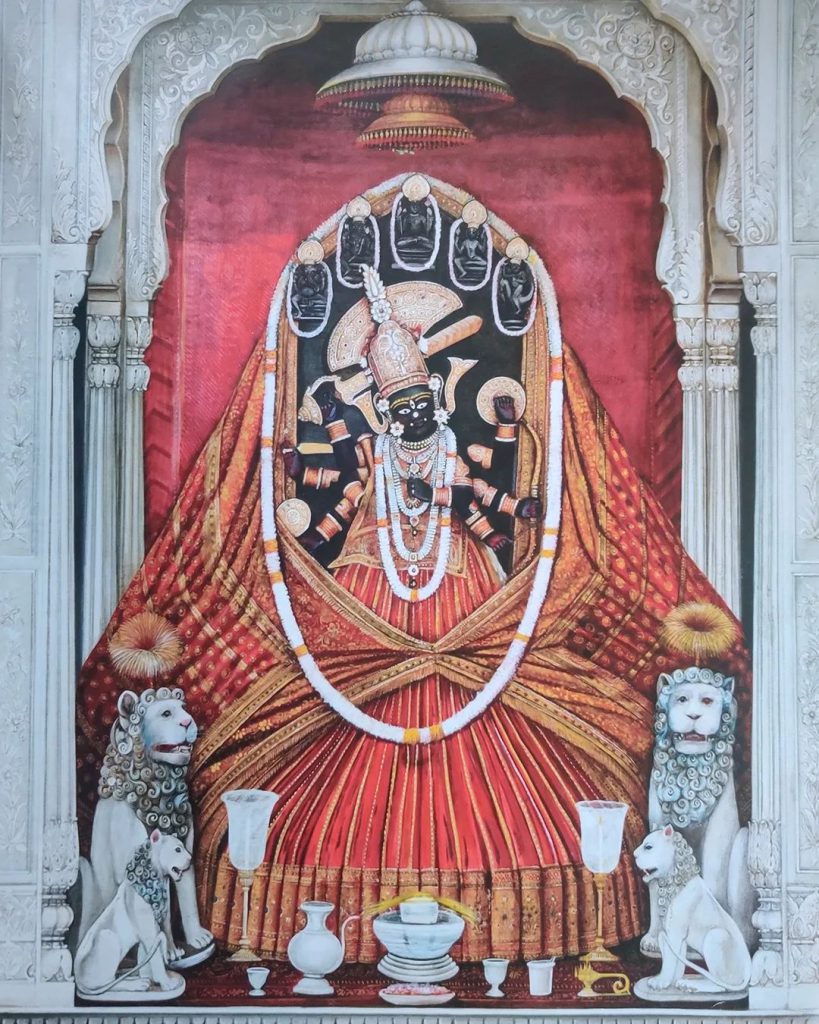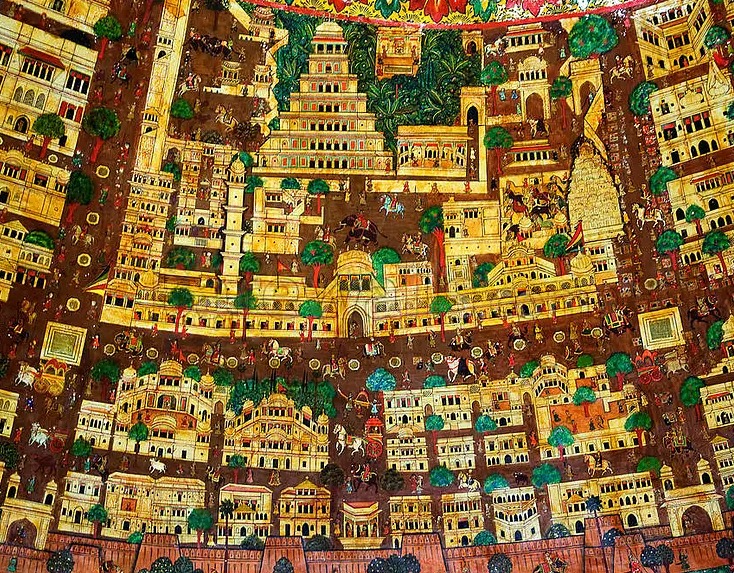Route#1 – Amer: The OG Capital
Echoes of Dhoondhar
Step into the heart of Rajasthan’s ancient capital with our heritage walk through Amer, where the Kachwaha Dynasty ruled before Sawai Jai Singh II moved the seat to Jaipur in the 18th century. As we weave through the meandering lanes, Amer reveals its rich past, embodied in magnificent palaces, age-old temples, hidden shrines, and charming havelis. The walk takes us through a city built with defence and devotion in mind, where sturdy walls embrace structures that reflect the artistic finesse of Rajputana architecture. Alongside these architectural marvels, the iconic step wells—built ingeniously to sustain life in this desert region—await, each narrating its own stories of resourcefulness and resilience.
Beyond its structures, Amer breathes with vibrant traditions and cultural remnants from generations past. You’ll find yourself among locals who continue to preserve their way of life, offering a peek into the town’s living heritage. As we climb up to scenic viewpoints, Amer unfolds beneath us, with stunning vistas of the fort walls winding up the hills. At each turn, stories await—from the tales of warrior kings to the whispered legend of Shila Mata —adding layers to the cultural landscape. This experience of Amer is not just a walk through the lanes but a journey back to the spirit of Dhoondhar’s original capital.
For those who wish to linger, one can hike up to the Sagar, beyond Kheri gate and absorb the sight of Jaigarh perched atop the rugged Aravallis.

Route#2 – Jaipur Genesis: Dhoondhar 2.0
Taste of our culinary heritage – Savoury streetfood included

The earmarked route for the walk is 1.5 km long, with most of the points of interest lying within and around the Chowkri Sarhad. The walk’s starting point is the Govind Devji Temple, the seat of the aaradhya of Jaipur – the patron deity. The group shall then proceed to the Jaleb Chowk. Moving towards the Sireh Deohri ka Darwaza on the East side of the chowk, one walks through the beautifully painted Dhundubi pol.
Right across the Sireh Deorhi ka Darwaza, is the humble entrance to the loftily sited Kalki Mandir. Further along the street is the Sawai Man Singh Town Hall – a fantastic example of how contemporary European trends had begun to influence the vernacular design vocabulary of Jaipur and the amalgamation of both.
We approach the Badi Chaupad, but not before admiring the city’s iconic structure, the Hawa Mahal. A vantage point on the South-East corner of the Chaupad offers a beautiful view of the square, the Hawa Mahal, the Isar Lat in the background, the top of the Samrat Yantra of the Jantar Mantar complex, contrasting against the hustle-bustle of our metropolis.
Now that we’re buzzing with trivia and the morning’s excitement, we walk south to the Gheewaalon ka rasta to satiate our street-food cravings and polish off some of the savouries fresh out of the kadhai!
Route#3 – Chowkri Chronicles
Step into the hidden spine of old Jaipur
Starting from the historic Badi Chaupar and concluding at Choti Chaupar — one of the two southern termini of the original Chowkri Sarhad, do not mistake this quiet path for simplicity: the route weaves through forgotten lanes, old sanctuaries, royal thoroughfares and vantage points that together tell the story of the city’s inner planning, its lived reality and its layered past.
Beyond the Badi Chaupar, we dive into less-known bylanes and narrow alleys, where tucked-away temples and modest shrines — often ignored by common tourism routes — emerge unexpectedly. Past the imposing silhouette of Jantar Mantar and the City Palace complex, we trace the contours of the royal precinct, imagining the comings and goings of nobles and courtiers. Here, in the quiet corners, one can sense the echoes of ritual, devotion and everyday life which continued even as royal processions and palace affairs took centre stage above.
Our path then leads us through the old “Atish” — vestiges of a time when mobility and movement were integral to the fabric of the city. From these humble beginnings, we ascend toward the sky: onto the lofty perch of Isar Lat. There, from its commanding height, we pause to take in a 360-degree panorama of the city: the grid of neighbourhoods, the subtle alignment of lanes, the rhythm of built blocks, the interplay of monuments and everyday habitat.
We engage with ephemeral silence until we arrive at Chodi Chaupar. Here ends our walk, but not our story. As the city pulses around us, we invite you to reflect on the meticulous planning, the spatial logic, the imprints of power and faith — and the lives of those who inhabited these layers: from royalty to commoners, from pilgrims to stable-hands.
Chowkri Chronicles is not simply a stroll through stone and lanes. It is a walking narrative — a conversation between sky and street, palace and shrine, plan and people. Through it, we revisit the lifestyle, the vision, the spatial philosophy that shaped early Jaipur.

Route#4 – Up above the world so high: Sudarshangarh

The northern edge of the city of Jaipur is nestled in the foothills of Nahargarh – on the summit of which sits a beautiful fort complex. The complex boasts a huge footprint and a series of two fortifications were built to protect it. A large part of the fort was constructed in 1734, shortly after Jaipur, as a retreat for the King to enjoy while staying close enough to his newly built capital.
The walk shall begin with an introduction and the exploration of the nine subsections for the Queens and the King’s chambers in the palace. The roof of the complex offers spectacular, sweeping views of the city of Jaipur down to the straight avenues of the bazaar streets!
After an exploration of the Palace, we walk towards the Nahar Singh Bhomio Temple and the water management system of the fort. The system is intricate, comprising rainwater harvesting tanks located in the basement and a mechanism for redirecting the excess water to the two step-wells in the premises. The smaller stepwell is located opposite the main entrance to the palace, from where we shall trace our path towards the larger stepwell (at the rear of the complex) which gained its fame from an iconic scene shot here for the movie ‘Rang de Basanti’.
The tour would end here; hopefully, the participants will depart with a sense of wonder and food for thought! They have the option of exploring the rest of the complex and head over to the ramparts of the fortification, for every platform offers breathtaking views of the city below.
